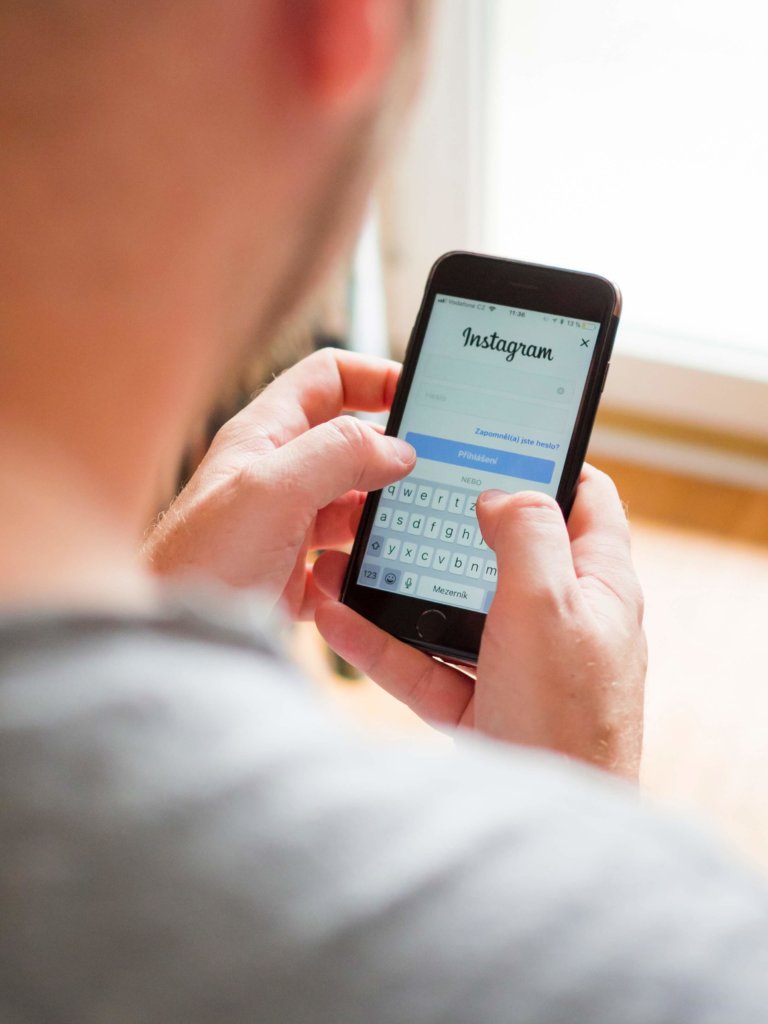In this webinar, Nimble CEO Jon Ferrara discusses how to apply the power of Influencer Marketing to help you grow your business to scale with a panel of some of the world’s leading digital marketing trailblazers and luminaries.
The panel includes Brian Carter, owner of the esteemed marketing agency The Brian Carter Group and frequent speaker and best-selling author; Sam Fiorella, partner at Sensei Marketing and author of How to Create, Manage and Measure Influential Marketing, which is used across colleges, universities in the United States and Canada; Marcy Massura, a leader in emerging media mainstream marketing and owner of the digital agency Marcy Massura and Company; and Lee Odden, CEO of TopRank Marketing and publisher of one of the most popular marketing blogs in the world.
Storytelling and Influencer Marketing
People have been using storytelling to stay top of mind with their customers, prospects, and community since the beginning of time. Staying top of mind requires you to become a trusted adviser to your prospective customers and ideally their influencers as well. Rather than telling other people how great you or your products are, teach them how to be great, and they’ll figure out they need your product or service. If you give your knowledge away on a daily basis you will build trust, intimacy, and influence with key people you need to grow your business.
A great example of storytelling is Defiance milk, a powdered milk company out of New Zealand. In the late 1800’s they were competing to sell their powdered milk worldwide. They tried advertising but it didn’t drive the results they desired. Then, somebody at the company started to compile questions from mothers about how to use powdered milk to feed their babies. This compilation of interviews ultimately became The Glaxo Baby Book.
Because Defiance wasn’t a great name for a brand of milk, they changed the company name to Glaxo. The Glaxo Baby Book became a bestseller and renowned for being a premier teaching guide for new mothers raising babies. The book turned Glaxo into not only the biggest powdered milk company but the largest pharmaceutical company in the world. Today, they are known as GlaxoSmithKline.
What is Influencer Marketing?
Influencer Marketing utilizes prestigious individuals to sway public perception or purchase behaviors of consumers in favor of your brand. It involves getting people to think differently, making them aware of your product and persuading them to consider and buy your product over your competitor.
Influence can be exerted across multiple channels through social and earned media, using an individual’s status or expertise or relationship with their audience and their personal recommendation to alter the consumer’s actions.
The Difference Between B2B and B2C Influencer Marketing
Influencer Marketing started as a tactic that was used when other methods weren’t working. It has since evolved to become a critical component of any company’s holistic marketing strategy. Influencer Marketing looks and feels very different depending on the organization and the type of business, but typically involves content collaboration with self-syndication.
B2C traditionally attracts a lot of attention within the Influencer Marketing space, but B2B is newer to the game. A recent research report conducted by Traackr and TopRank Marketing revealed that B2B is significantly behind B2C when it comes to levels of sophistication, investment, and effectiveness in the Influencer Marketing space.

Unfortunately, B2C faces issues with compliance, disclosure, and fake followers. Because individuals can self-anoint themselves with influencer status and get paid generously to promote sponsored content, it generates a lot of opportunism that leads to no traction for the brand.
In terms of B2B, influencers are more so subject matter experts rather than well-known social media personalities. They tend to have a niche and active networks that are paying close attention to what they have to say, but they’re not necessarily acting as influencers. B2B influencers are typically more interested in peer recognition, or the greater good versus exposure.
Influencers are becoming integrated across the entire customer lifecycle from awareness to retention and advocacy. An emerging trend in B2B is organizations looking internally for influencers through employee platform programs and social advocacy, and incorporating influencers into talent acquisition or customer service. Instead of solely advocating for a product or service purchase, the company can add value across the entire customer relationship.
Always-on engagement is becoming more prevalent to allow for continuous monitoring and connection with influencers between campaigns or events so you can keep those relationships alive. Building intimacy and trust with influencers beyond the business relationship is crucial because the only thing stopping another competitor from stealing your influencer is the strength of your relationship.
Examples of Successful Marketing Influencer Campaigns
A software company called Profix in the financial planning and accounting industry wanted to create awareness and exposure for themselves in a unique way by drawing attention to a report they had completed on the future of business finance. Rather than just publishing the report and using paid media to amplify it, they identified influencers within the finance industry they didn’t have relationships with that they wanted to collaborate with on the content.
They then created a traditional listicle post recognizing a list of 25 financial planning and accounting influencers, which got them on their radar and gave them an opportunity to invite them to collaborate on the campaign. From a creative standpoint, they decided to base the campaign on something you normally wouldn’t find in the financial planning and accounting industry – a Candy Crush inspired quiz.
The quiz questions were provided by the influencers who each had their own cartoon avatar. They also created a traditional PDF version of the content, infographic, interviews with the influencers, and social media graphics. The interactive quiz was something everyone could relate to. As a result, social shares increased dramatically and 25% of the people that interacted with the asset downloaded the report.
Ringling College of Art and Design, a private art college, was struggling to attract students because parents don’t like the idea of sending their kids to an art college — thanks to the “starving artist” perception.

They discovered their best influencers were current students and past graduates who have gone on to be very successful. They created an online community that allowed students who were thinking about pursuing a career in the arts and their parents to speak directly to students as well as past graduates who were prosperous and winning Oscars. They found that engagement was not just at the point of making the decision but throughout the students’ high school years.
Once they had prospective students in their database, they continued to work with them while they were in school; in turn, these students would become mentors for future students. The college was successful at creating a community where they can connect decision-makers with those who can influence that decision.
Another example of a successful Influencer Marketing campaign is the story of The Grocery Manufacturers Association. They wanted to create a program that would help support their SmartLabel app that gives consumers information on allergens, nutrition, and ingredients for about 600,000 products.
They started by identifying amazing influencers to work with and then created social content similar to a commercial which was shot in a grocery store. They used the influencers’ equity in their community to distribute the content and they syndicated it to millions of people. The brand-owned properties distributed the content.
Next, they retargeted people who visited their website with the influencer content. The last layer of syndication was working with all of the brands – P&G, Unilever, Coca-Cola, etc. – to then promote that content on their social channels as well. They had 300,000 views within a couple weeks and downloads were up exponentially. It was one piece of content done very well, but it was a big endeavor in syndication.
The moral of the story is: to maximize your investment in influencer campaigns, make sure they are evergreen so you can repurpose and reuse them in different ways.
Influencer Marketing Tips and Strategies
Research potential influencers
Ad tools like Facebook Audience Insights help you learn more about your potential influencers with information such as demographics, page likes, purchase behavior, and usage, ensuring you don’t make a mistake with your choice of influencer.
Build relationships with influencers
Learn who the influencer is by asking thoughtful questions, using their answers to create a repository of modular content that includes the influencer’s area of expertise, their credentials, as well as keyword tags. Over time, you will amass a repository of micro-content that can easily be used at any given time to repurpose into other thought leadership. It’s a very low barrier to entry for them to participate, but it’s very high value in return. It gives the influencer added exposure while providing you with valuable content.
Develop your own community
Build relationships with the customer by developing a community where your brand facilitates their business growth or adds value to their life. Facilitate those conversations and communities among audience members who are your potential clients. Then use a social CRM tool like Nimble to listen and identify the influencers within those communities that are genuinely driving interest and driving conversations and work with them.
Identify influencers
Use an influencer marketplace like Tomoson or FameBit to shop for key influencers to promote your content or look at a platform like BuzzSumo, which uses a social media search engine to help you find bloggers and other influencers. Another tool, AspireIQ, streamlines influencer discovery, management, and ROI, to easily build authentic influencer relationships.
Manage and measure influencer programs
Traackr is a Do-It-Yourself tool that allows you to manage, validate and measure your influencer marketing programs. A similar tool called AnalyticaA lets you upload content to their system, performs text analysis and sends back influencer recommendations based on the topics discussed in your content, giving you insight on who to invite to contribute outside expertise for that particular content asset. Another tool, GroupHigh, is focused on bloggers. It’s a good option for those that want to make sure they’re inviting people who aren’t just socially popular but actually authoring blog content.
Make sure you take the time to build influencer relationships and incorporate tools to manage those relationships and ideally turn them into a face-to-face engagement.
